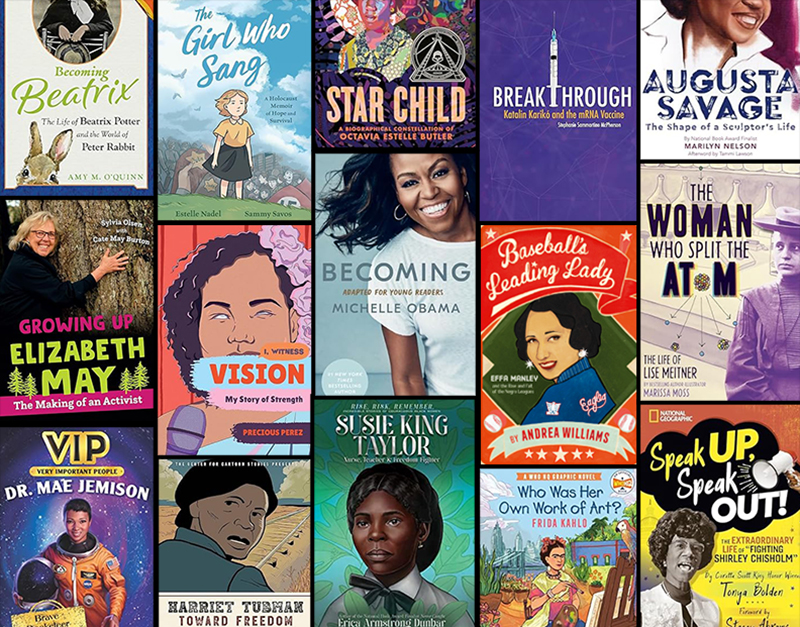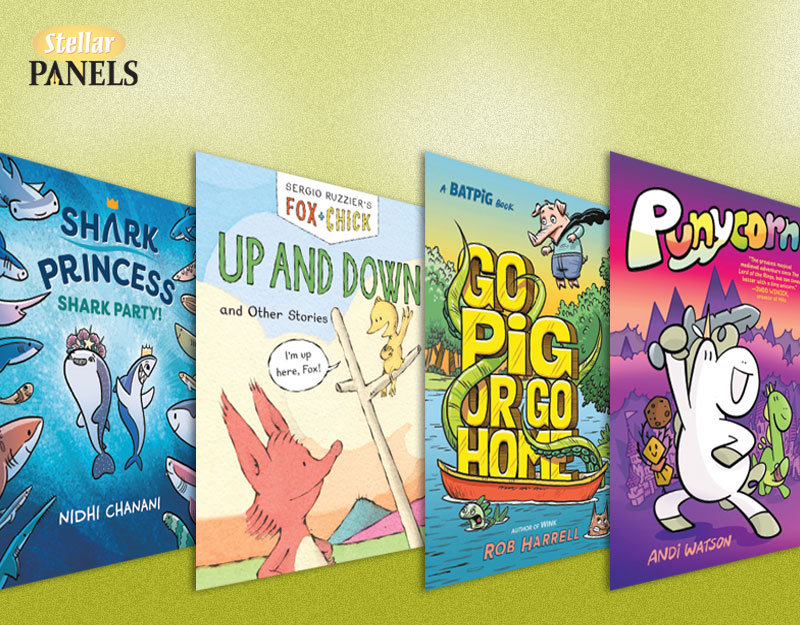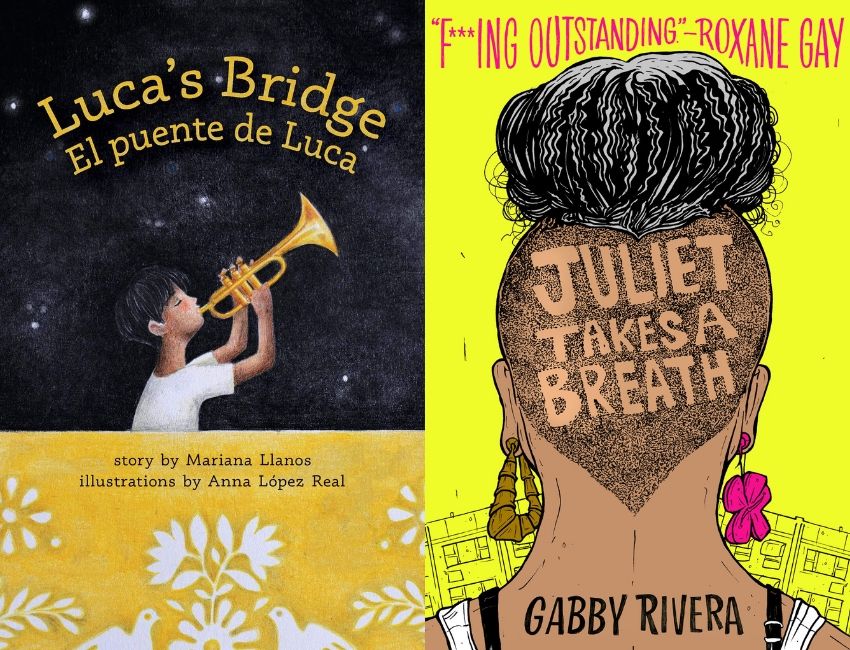Wonderstruck
Wonderstruck
Written and illustrated by Brian Selznick
Published by Scholastic Press, 2011
ISBN# 978-0545027892
Grades 3 and up
Teaching Invitations
Grades 3 and up
- Constellations. Ben’s mother taught him that if he can find the North Star, he’ll never be lost. Constellations have guided travelers for centuries. Introduce your students to the constellations, investigate the stories behind their names, and practice locating and drawing them on a map of the night sky.
- Museum Boxes. Ben carries a museum box of small artifacts that represent meaningful moments in his life. Invite your students to create a museum box of their own and share them with the class. Extend the activity by connecting it to various forms of writing that are inspired by their museum box artifacts.
- Dioramas. Ben observes a number of spectacular dioramas in the museum halls. Offer your students the chance to participate in the classic classroom project of creating dioramas based on Ben’s scenes from Wonderstruck. Assign each student (or pairs or groups of students) a scene to create in 3-D, and have everyone display their dioramas in chronological order of the story. Or, you may take this activity a step further and have them do what Daniel Kincaid did: study a specific habitat group and create a diorama of it, including the local plant and animal species that live there. Chances are, while you may recall creating dioramas as a child for various classroom projects, your students may never had to construct one. Visit the link for the Dioramas at the American Museum of Natural History (listed below in Further Explorations) for inspiration.
- Storytelling without Words and Sounds. Wonderstruck explores ways in which stories are told without the traditional use of words or sounds. One way is through the use of silent film, which is the medium through which Lillian Mayhew tells some of her tales. Another is obviously through wordless illustrations. Challenge students to create their own wordless picture books, or perhaps even silent films, to tell a story. Maybe students can take a story they already know well, such as one you’ve read aloud to them, and retell it in a wordless or silent format. Visit the websites on the silent film industry listed in Further Explorations below, and search this blog for titles of wordless picture books, to find mentor texts to help students construct their stories.
- Sign Language and Fingerspelling. Although they initially resist it, Ben and Rose learn the value of communicating via sign language. At one point in the story, Selznick even uses fingerspelling to communicate Ben’s thoughts to readers. Help your students decode and comprehend what Ben is saying by teaching them to fingerspell the alphabet. Have them practice it with each other. Then encourage them to learn whole words and phrases and then practice conversations with each other, just as they would when learning any new language. Use the link listed below for the National Center for Sign Language and Gesture Resources.
- Stories within Stories. Start discussions with the obvious: Rose’s story is literally placed within the narrative of Ben’s story. Have students also list the stories that Ben and Rose follow: the mysterious relationship between Daniel Kincaid and Ben’s mother, the story that Rose writes in Ben’s notebook, etc. Then see how many different stories are further layered within those (e.g., the story of the Ahnighito meteor, or the story of Lillian Mayhew’s career) and how many are told through nonverbal modes (e.g., the story of Daniel’s life hidden within the Panorama). As an added bonus, Selznick cites multiple Newbery Award winning author E.L. Konigsburg as a source of inspiration in his Acknowledgements and challenges readers to find the allusions to The Mixed-up Files of Mrs. Basil E. Frankweiler in Wonderstruck
Critical Literacy
- Representations of the Deaf Community. Wonderstruck’s two protagonists are both deaf. While Rose is deaf at the start of the story and cannot speak, Ben is only half deaf and then becomes deaf in both ears when lightning hits his house. Ben can still use his voice, however, as he pursues the identity of his father. Are these depictions of deaf children and their daily interactions accurate? What research did Selznick do to determine how to represent them? What about Rose’s description of the school she attended for the hearing impaired? Pair Wonderstruck with other books about the deaf community (see some of those listed in Further Explorations below) to compare, contrast, and analyze the various representations, challenges, and abilities of the characters.
Further Explorations
Online Resources
Brian Selznick’s Wonderstruck website
http://wonderstruckthebook.com
Interview with Brian Selznick
http://www.readingrockets.org/books/interviews/selznick
Interviews about Wonderstruck
http://www.cnn.com/2011/11/18/living/wonderstruck/index.html
http://www.npr.org/2011/09/13/140403979/wonderstruck-a-novel-approach-to-picture-books
http://today.msnbc.msn.com/id/44244774/ns/today-books/#.Tt-v6Jhs8jx
American Museum of Natural History
http://www.amnh.org/
Dioramas at the American Museum of Natural History
http://www.amnh.org/exhibitions/dioramas/
The Panorama of the City of New York – Queens Museum of Art
http://www.queensmuseum.org/exhibitions/visitpanorama
Wonderstruck in the Panorama: Drawings by Brian Selznick –Queens Museum of Art exhibit
http://www.queensmuseum.org/8467/wonderstruck-in-the-panorama-drawings-by-brian-selznick
National Center for Sign Language and Gesture Resources
http://www.bu.edu/asllrp/ncslgr.html
StarDate Constellation Guide – University of Texas McDonald Observatory
http://stardate.org/nightsky/constellations
Astronomy for Kids Constellation Hunt Game
http://www.kidsastronomy.com/astroskymap/constellation_hunt.htm
Silent Films – Internet Archive
http://www.archive.org/details/silent_films
Silent Films – AMC
http://www.filmsite.org/silentfilms.html
Books
Baker, J. (2010). Mirror. Somerville, MA: Candlewick Press.
- This beautiful wordless picture book tells the story of two children who seem to live worlds apart, yet share similar daily experiences. (See our entry on Mirror at http://classroombookshelf.blogspot.com/2010/11/mirror.html)
Blake, Q. (2006). Tell me a picture. London: Frances Lincoln Children’s Books.
- The famed illustrator Quentin Blake explores famous 26 works of art in a book formatted to represent a museum tour.
Browne, A. (2003). The shape game. New York: Farrar, Straus, & Giroux.
- A picture book semi-autobiography by renowned illustrator Anthony Browne about a family’s day in the museum.
Carey, K. (2007). The smart princess and other deaf tales. XXX: Second Story Press.
- A collection of imaginative short stories about the dreams, wishes, and challenges of deaf children.
Cottrell, F. B. (2007). Framed. New York: HarperCollins.
- A charming, lighthearted novel about a boy who steals paintings from the National Gallery in London.
Konigsburg, E. L. (2007/1967). From the mixed-up files of Mrs. Basil E. Frankweiler. New York: Atheneum Books for Children.
- The Newbery Award-winning novel about two runaway children who take up residence in New York City’s Metropolitan Museum of Art.
Lehman, B. (2011). The secret box. New York: Houghton Mifflin.
- A wordless picture book about a box and its mysterious contents hidden beneath the floorboards of a dormitory. (See our entry for The Secret Box at http://classroombookshelf.blogspot.com/2011/03/secret-box.html)
Matlin, M. (2004). Deaf child crossing. New York: Simon & Schuster Books for Young Readers.
- Oscar winner and deaf celebrity Marlee Matlin’s debut novel about the friendship between two girls, one of whom is deaf.
Millman, I. (1998). Moses goes to a concert. New York: Farrar, Straus, & Giroux.
- A cheerful picture book series about a boy who goes to a school for deaf children. The books use written English and American sign language to tell their tales.
Rankin, L. (1996). The handmade alphabet. New York: Puffin.
- A stunning alphabet picture book depicting the alphabet in sign language.
Selznick, B. (2007). The invention of Hugo Cabret. New York: Scholastic Press.
- Selznick’s 2008 Caldecott Award-winning book in which the story is also narrated through alternating print text and wordless illustrations.
Smith, D. J. (2006). The boys of San Joaquin. New York: Atheneum Books for Children.
- Set in 1950s, this chapter book presents three boys, one of whom is deaf, as they solve the mystery of missing church funds.
Uhlberg, M. (2009). The printer. Atlanta, GA: Peachtree Publishers.
- A picture book in which a young boy recalls the day his deaf father performed a tremendously heroic act.
Van Allsburg, C. (2011/1984). The chronicles of Harris Burdick. New York: Houghton Mifflin Harcourt.
- This spellbinding collection of black-and-white illustrations, accompanied by minimal text, also encourages children to closely investigate pictures to determine the stories they tell.
Vanderpool, C. (2010). Moon over Manifest. New York: Delacorte Press.
- The 2011 Newbery Award-winning novel also uses different genre formats and tells several stories within stories. (See our entry on Moon Over Manifest at http://classroombookshelf.blogspot.com/2011/02/2011-ala-newbery-winner-moon-over.html)
Weitzman, J. P., and Glasser, R. P. (1998). You can’t take a balloon into the Metropolitan Museum. New York: Puffin.
- A wordless picture book that follows a girl and her lost balloon through the halls of New York City’s famous art museum.
Filed under: Novels
About Grace Enriquez
Grace is an associate professor of language and literacy at Lesley University. A former English Language Arts teacher, reading specialist, and literacy consultant, she teaches and writes about children’s literature, critical literacies, and literacies and embodiment. Grace is co-author of The Reading Turn-Around and co-editor of Literacies, Learning, and the Body.
ADVERTISEMENT
ADVERTISEMENT
SLJ Blog Network
One Star Review, Guess Who? (#202)
Review of the Day: My Antarctica by G. Neri, ill. Corban Wilkin
Exclusive: Giant Magical Otters Invade New Hex Vet Graphic Novel | News
Parsing Religion in Public Schools
Take Five: LGBTQIA+ Middle Grade Novels
ADVERTISEMENT







